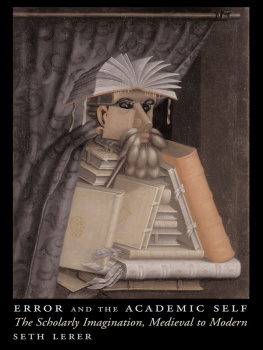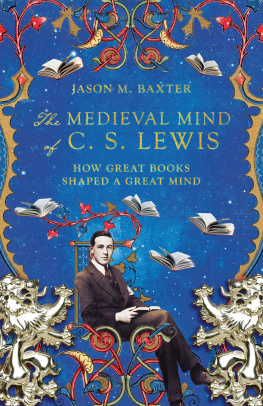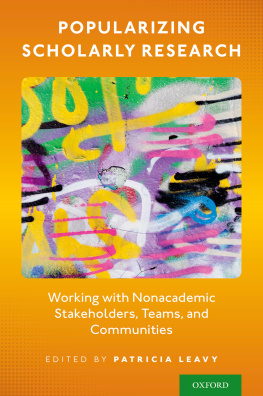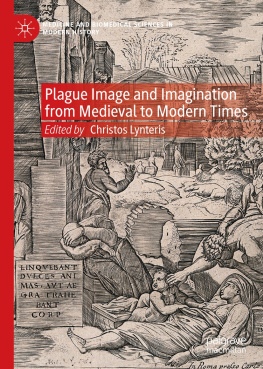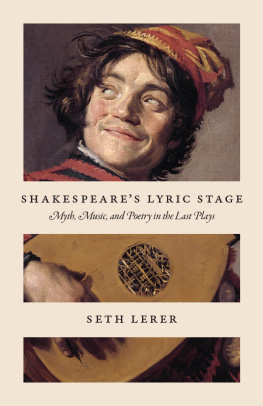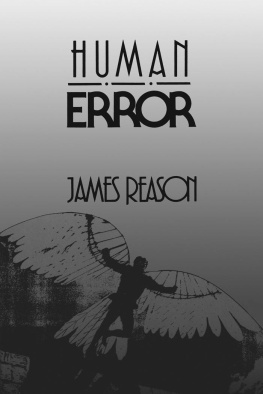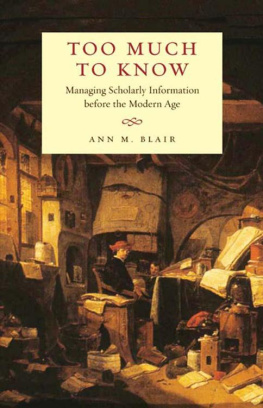ERROR AND THE ACADEMIC SELF
COLUMBIA UNIVERSITY PRESS NEW YORK
ERROR AND THE ACADEMIC SELF
the scholarly imagination, medieval to modern
SETH LERER
Columbia University Press
Publishers Since 1893
New York Chichester, West Sussex
cup.columbia.edu
Copyright 2002 Columbia University Press
All rights reserved
E-ISBN 978-0-231-50747-9
Library of Congress Cataloging-in-Publication
Data Lerer, Seth, 1955
Error and the academic self : the scholarly imagination,
medieval to modern / Seth Lerer.
p. cm.
Includes bibliograhical references and index.
ISBN 0231123728 (cloth : alk. paper)ISBN 0231123736 (paper : alk. paper)
1. English philologyHistory. 2. Great BritainIntellectual life.
3. Scholarly publishingGreat Britain. 4. Errors and blunders, LiteraryHistory.
5. English literatureHistory and criticismTheory, etc. 6. American literature
History and criticismTheory, etc. 7. ErrorHistory. I. Title.
PE51.L46 2002
820.9dc21
2002073501
A Columbia University Press E-book.
CUP would be pleased to hear about your reading experience with this e-book at .
CONTENTS
So many individuals and institutions have contributed to this book that I cannot name them all. Joseph Dane has always been a source of knowledge and a stimulating, thoughtful reader of just about everything I have written. Brian Stock has long guided my sense of historical inquiry. Conversations with Timothy Hampton helped me formulate the shape of this book, while R. Howard Bloch, John Ganim, Anthony Grafton, Nicholas Howe, and David Wallace have, at various times, helped me see the implications of its claims. Specific contributions to my work were also made by Brett Bourbon, Hans-Ulrich Gumbrecht, Nicholas Jenkins, Gavin Jones, Copplia Kahn, Herbert Lindenberger, Stephen Orgel, Marjorie Perloff, Jennifer Summit, Roland Greene, and Alex Woloch.
Portions of this book were read at Berkeley, Brown, Columbia, Fordham, the Huntington Library, California State University at Long Beach, the University of Miami, the University of Oregon, the University of California at Santa Cruz, Stanford, the University of Texas, the University of Toronto, Vanderbilt University, Yale, York University, and at meetings of the Modern Language Association of America.
Present and former students who have helped with this material include Dorsey Armstrong, Bradin Cormack, Karen Gross, Ryan Johnson, Meg Worley, and especially Deanne Williams.
Stanford University funded several leaves of absence and hosted a conference on Erich Auerbach in 1992, out of which my work on Mimesis and migr philology developed. A fellowship year at the Stanford Humanities Center (20002001) and a summer fellowship at the Huntington Library (2001) enabled me to finish the book. I also thank the staffs at the British Library, the Bodleian Library, the Cambridge University Library, the Library at Trinity College, Cambridge, and the libraries at Berkeley, Princeton, and Stanford.
I am also grateful to David Kastan and James Shapiro for sponsoring a visit to Columbia and for putting me in contact with Jennifer Crewe of Columbia University Press, who generously welcomed this book for publication and who has proven to be an insightful and patient editor.
Portions of this book have previously appeared in print. revises and expands material originally published as Making Mimesis: Erich Auerbach and the Institutions of Medieval Studies, in Medievalism and the Modernist Temper, ed. Stephen G. Nichols and R. Howard Bloch (Baltimore: Johns Hopkins University Press, 1996), a different version of which was also published as the introduction and Philology and Collaboration, in Literary History and the Challenge of Philology: The Legacy of Erich Auerbach, ed. Seth Lerer (Stanford: Stanford University Press, 1996), pp. 110, 7891. The epilogue is an expanded and annotated revision of my essay Forbidden Planet and the Terrors of Philology, Raritan 19 (2000): 7386. I am grateful to the original editors and publishers for permission to incorporate these earlier materials into this book.
Finally, I have sought to quote accurately from my sources. No texts are normalized. Spelling, capitalization, punctuation, syntax, and phrasing remain (unless otherwise noted) as they appear in the originals, except that single quotation marks have been changed to doubles where appropriate (and vice versa). All unattributed translations are my ownas are, of course, all errors.
For Aaron
I would like to write a book on the scholars way of life.
Friedrich Nietzsche, Wir Philologen
I do not think I have ever published anything that did not have an error in it. Typos have crept in and escaped proofreading. Miscitations and mistranslations have refused correction. Facts and judgments have, at times, seemed almost willfully in opposition to empirical evidence or received opinion. It is the duty of readers, so it seems, to catch such errors. Referees for publishers and, after them, book reviewers often begin well and well-meaningly. But praise soon shatters into pedantry, and reports and reviews will often end with catalogs of broken lines and phrases: errata uncaught by editor or author, blots on the reputation of the scholars knowledge or critical acumen.
Im not alone. All creatures of the academic life subject themselves to such reviewing, and most practice it themselves. To have been savaged and to savage, whether veiled behind the scrim of the anonymous report or displayed in the full acknowledgment of the printed byline, are the marks of my business: the rite of passage and the passing of ones rights. It is as if Ive led an erroneous life, as if what should be toted up on the pages of the book of judgmentor, more prosaically, in annual decanal salary reviewsare not achievements but mistakes. We live, in the academy, by blunder.
What are the sources of this life, the origins of such a business? This book began as both a cultural-historical and an autotherapeutic answer to this question. Its working claim is that the origins of erroras an ideology, a practice, a defining mode of scholarly identitylie in the nexus of the editorial, the academic, and the political that has shaped textual adventures from the Renaissance to the present. My argument is that the professionalization of literary study took shape through such encounters with the erroneous: more specifically, through detailed engagements with the classical inheritance of rhetoric and philology. But my conception of error embraces both the erring and the errant (the Latin word errare means, of course, to wander). Being wrong is also about being displaced, about wandering, dissenting, emigrating, and alienating. The professionalization of the scholar, and, in turn, the pose of the vernacular rhetorician and philologist, was a means by which migrs, exiles, dissenters, and the socially estranged gained private worth and public legitimacy. This is a book, therefore, about the academics search for institutional and intellectual belonging. By defining a rhetoric of error in professional self-shaping, by recalibrating the impact of canonical writers and readers, and by resuscitating long-neglected but historically vital early scholars, this book hopes to illuminate the texture of academic culture and the formation of university disciplines. Indeed, it hopes to show how scholarship itself can be a form of personal illuminationan encounter with the sublime, a romance of reading.
I have framed my history of scholarship through specialized case studies of its major methodologies and moments. The chapters of this study, though distinct in focus, should be read in sequence as detailing a trajectory of intellectual developmentmy own, as well as my subjects. Thus I begin at the beginning of our modern academic culture, with the humanists of Renaissance England and the origins of textual production in print. Errata sheets become, I argue in my first chapter, the sites of authorial self-definition, the places where the writer poses as his own best reader, where confessions of mistake and acts of emendation establish intellectual authority. There is both a poetics and a politics to the erratum in the early modern period. The academic and literary life in print becomes here both a performance and a defense, and my review of its foundational activities (textual criticism, lexicography, epistolary writing, lyric poetry) hopes to contribute to a new account of the self-fashioning long seen as the defining idiom of Renaissance discourse.


